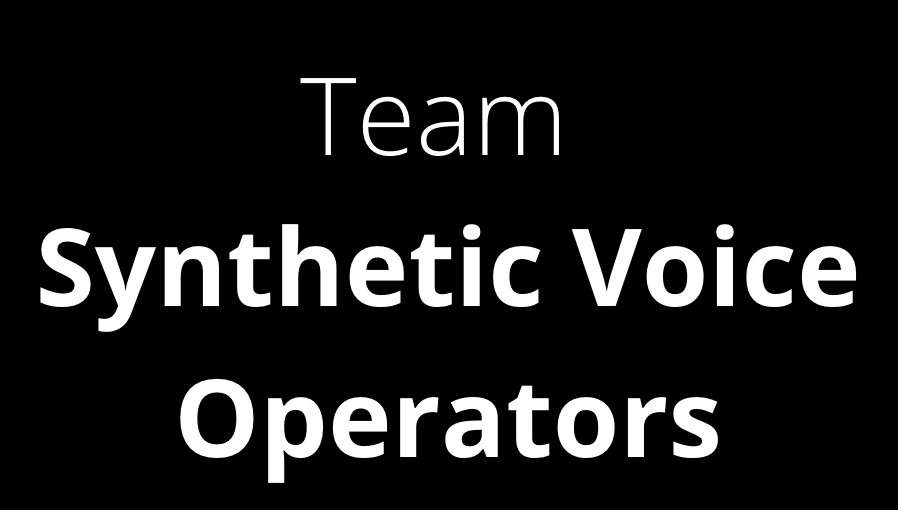Team Synthetic Voice Operators
Team Synthetic Voice Operators
University of Central Florida
Training Without Trainers: A Synthetic Voice Platform for Soldier Readiness
The Team
Jose Porta
BS in Computer Science
Matthew
BS in Computer Science
Overview
Program Executive Office Simulation, Training and Instrumentation (PEO STRI) - U.S. Army
Problem Sponsor
Original Problem Statement
PEO STRI needs a synthetic training partner for Call for Fire trainings.
Problem
For their senior design capstone at the University of Central Florida, Jose P. and Matthew McCullough partnered with PEO STRI (Program Executive Office for Simulation, Training, and Instrumentation) to address a significant training challenge for soldiers learning the "Call for Fire" protocol. Their objective: develop a synthetic training partner capable of guiding users through a realistic, responsive, and adaptive voice-driven call-for-fire scenario without requiring a live instructor.
The team was initially told the project could eventually be part of a deployable field device. However, after several rounds of clarification with sponsors, who had differing visions, the scope shifted to a fully software-based, classroom-friendly training tool. As Jose described, “We realized that one of our sponsors saw this as a prototype for a future device, while the other envisioned a purely software solution. We had to adapt quickly.”
Ultimately, their refined mission became clearer: build a web-based platform that allows soldiers to practice call-for-fire procedures autonomously, with structured, AI-powered voice interaction and real-time feedback.
Innovation
Team Synthetic Voice Operator built a streamlined, intuitive software platform that simulates battlefield communication scenarios using AI-driven natural language processing (NLP). Users log into a website that generates randomized training prompts, such as location, target, and orientation. They then proceed through the call-for-fire sequence, interacting with the synthetic assistant step-by-step, mirroring actual battlefield communication.
The system follows strict military doctrine, correcting errors in real time and producing a detailed after-action report to reinforce learning. “Instead of needing a human trainer, the tool gives instant feedback,” said Matthew. “It removes the time delays and inconsistency you might get with in-person instruction and makes it scalable across units.”
Development required creative problem-solving, particularly with limited resources. “Our sponsor didn’t give us even a penny,” Matthew noted. The team leaned on free credits and cloud services like PaperSpace to deploy and test various AI models. Despite resource constraints, the team was able to create a robust MVP by integrating NLP capabilities with a flexible training interface.
Team Synthetic Voice Operator’s Capstone Experience
For Jose, the project felt like a natural continuation of the work he began in H4D two years prior. “I’d already worked with a DoD partner through H4D, so I understood how to approach a problem from the government’s perspective,” he said. “That experience gave me the foundation to approach this project confidently.”
While H4D taught him the structure and methodology for government innovation, this capstone gave the team total ownership of a full software lifecycle. “It wasn’t a class project where everyone ends up with the same result,” Matthew added. “We handled everything, development, communication, project management. We had full creative and technical control.”
One of the biggest lessons? The importance of clear communication. “We had some conflicting visions from our sponsors, so it was on us to ask the right questions and get clarity,” said Jose. Matthew echoed the sentiment: “We got too excited at times and started building before fully confirming requirements. We ended up backtracking and losing valuable time. That taught us how crucial it is to move iteratively.”
What’s Next
Team Synthetic Voice Operator may not be done yet. Their sponsors were impressed with the final product and even initiated the conversation about turning it into an official tool. “Even as we were working on it, I told the team we could turn this into a product,” said Jose. “At the end, the sponsors brought it up before we even had to.”
The team now sees a future in defense and innovation. For Matthew, the project revealed unexpected possibilities: “I didn’t even know the military was exploring cutting-edge AI like this. It opened my eyes to a whole world beyond just software development.”
Jose is continuing on a path shaped by his earlier H4D experience and this project. “This validated what I already knew: that I want to work in this space, building practical, technical solutions for real-world government challenges.”
With a deployable MVP, strong user interest, and potential for scaling across training programs, the synthetic voice operator isn’t just a class project, it’s a launchpad.



